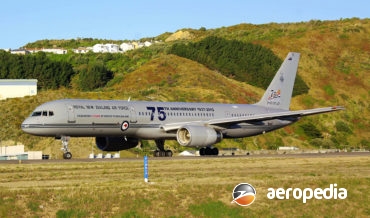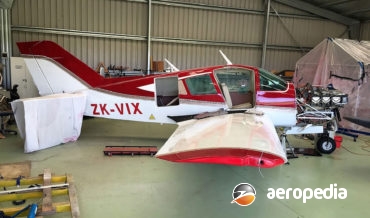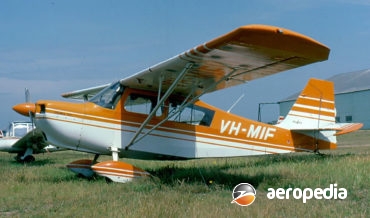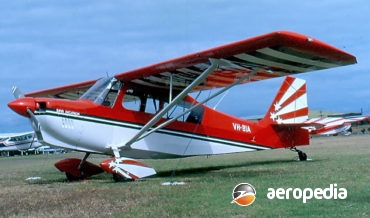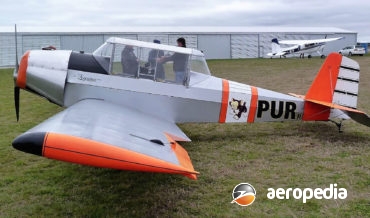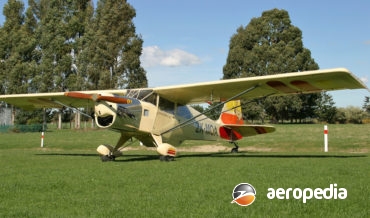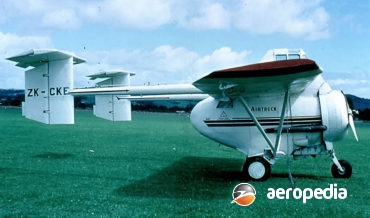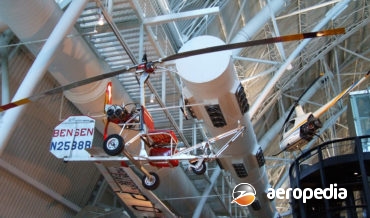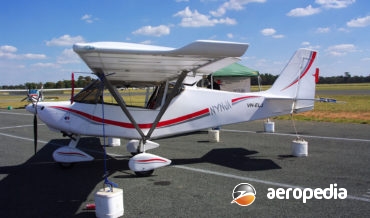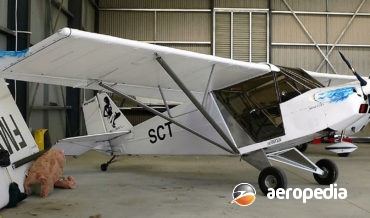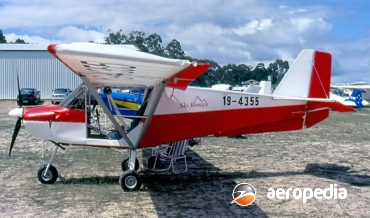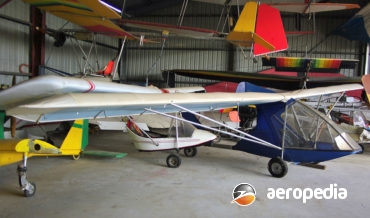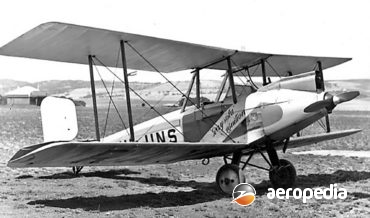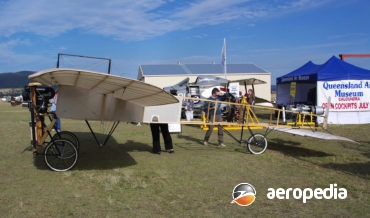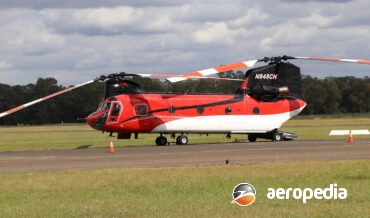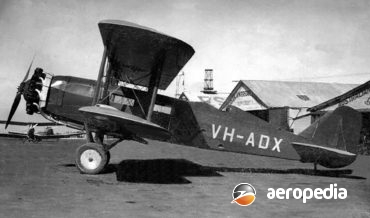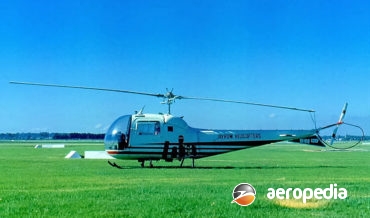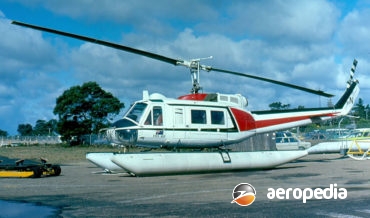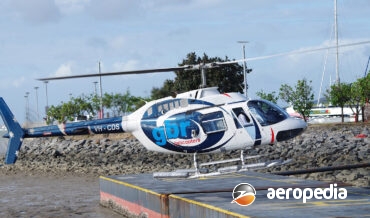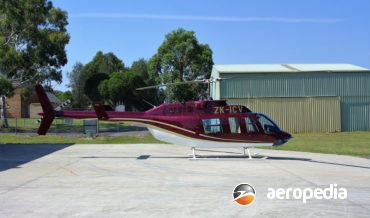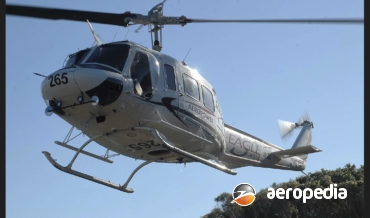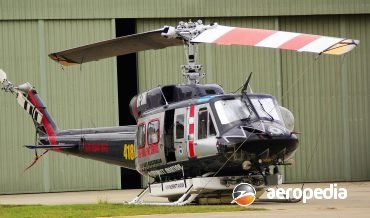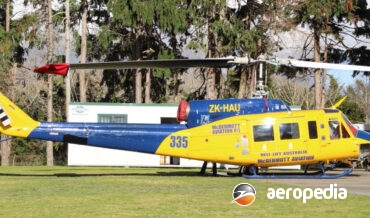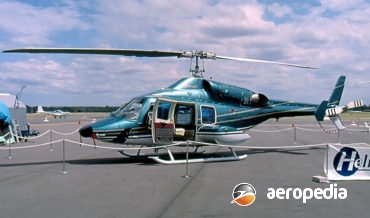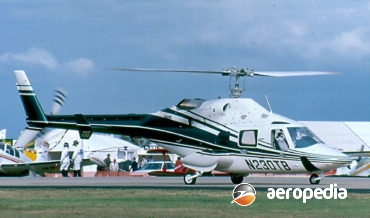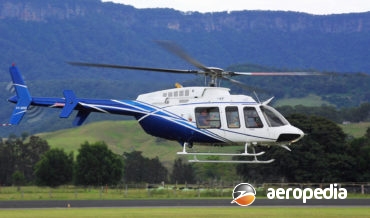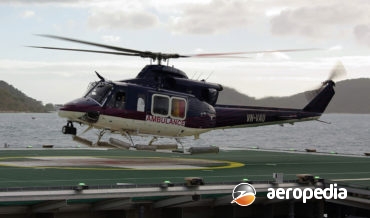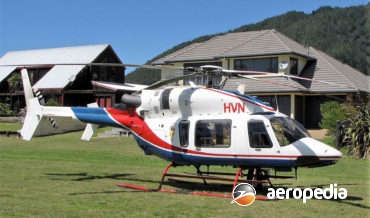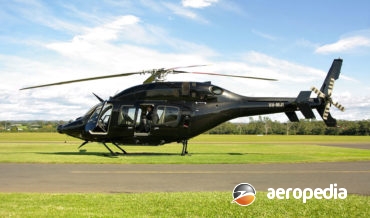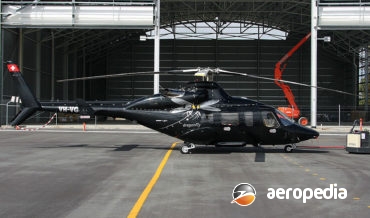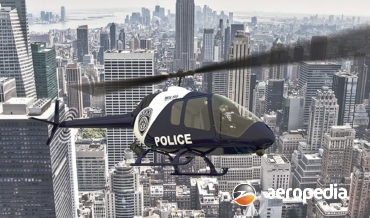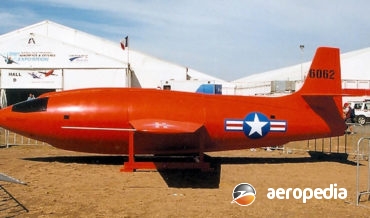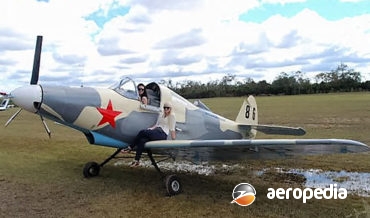David C. Eyre
The 757 was designed as a short to medium haul airliner with a flight crew of two and seating from 178 (16 first class and 162 tourist class) to a maximum of 224 or 239 all-tourist class.
David C. Eyre
- May 8, 2019
The Viking and Super Viking single-engine high-performance touring aircraft with a retractable tricycle undercarriage was manufactured in the United States initially by Bellanca from 1967, 1,356 examples having been completed by the type production concluded in 1975.
David C. Eyre
- May 8, 2019
The Champion 7ECA Citabria was a modernised version of the Champion 7EC Traveller and was first produced by Champion.
David C. Eyre
- May 8, 2019
Following Bellanca’s acquisition of the Champion Aircraft Corp in September 1970, production of the fully aerobatic model of the Citabria, the Model 7DCAB, was continued.
David C. Eyre
- May 8, 2019
Following the completion of Moa, Alan Belworth and his family have continued to build light aircraft as in June 2000 a further aircraft was completed, this being the Belworthy Figaro (ZK-PUR – c/n Bel 7), an all-wood fabric covered aircraft, the rudder and elevators being of steel tube construction.
David C. Eyre
- May 8, 2019
The Belworthy MOA is a New Zealand designed aircraft aimed at meeting a requirement for a large four-seat light aircraft with STOL performance able to operate from rough fields on private properties, with 100-knot (185 km/h / 115 mph) cruising speed and an endurance of five hours.
David C. Eyre
- May 8, 2019
The Airtruck was designed by Luigi Pellarini and built by Bennett Aviation Limited at Te Kuiti and, basically, was a development of the Kingsford Smith PL-7 Tanker and used some of the ideas from that design but using parts from ex-RNZAF Harvards which were available cheaply and in numbers.
David C. Eyre
- May 8, 2019
The fore-runner of the popular gyrocopter, the Bensen series of machines was designed and developed in the mid 1950s by Dr Igor Benson, who had emigrated from Russia to the United States after World War II.
David C. Eyre
- May 8, 2019
The Nynja was designed by Phillipe Prevot and is a logical development of the company’s previous designs, the Skyranger and the Swift.
David C. Eyre
- May 8, 2019
The Skyranger Swift is a development of the Skyranger and optimised to take advantage of engines ranging from 60-kw (80-hp) to 75 kw (100-hp) and was basically a Skyranger with a new smaller sports wing, the company providing an aircraft which benefited from higher cruising speeds and more comfortable flight
David C. Eyre
- May 8, 2019
The Skyranger is an ultra-light aircraft that was designed in Toulouse, France, by Philippe Prevot in the mid 1990s.
David C. Eyre
- May 8, 2019
Allen Rupert Betteridge was born on 11 October 1892, and was educated in Broken Hill, NSW, becoming a motor mechanic.
David C. Eyre
- May 8, 2019
Designed by Vladimir Talanczuk, a Ukrainian-born aeronautical engineer, the Chinook over the years has been produced in a number of models, either single-seat or two-seat and it is a high-wing ultra-light aircraft, the prototype of which was flown for the first time on 12 December 1982 at Wizard Lake, Alberta
David C. Eyre
- May 8, 2019
The TL-1 was designed and marketed by Birdman Aircraft Inc with the idea of selling a sturdy, lightweight aircraft that was inexpensive to build and operate, and which could be assembled with ease by a novice builder.
David C. Eyre
- May 8, 2019
The RT-1 Kangaroo [Reconnaissance Torpedo Type 1] was a long-range bomber designed close to the end of World War I, some 20 examples being produced, the majority of these being based in North Yorkshire and flown with some success on anti-submarine patrols.
David C. Eyre
- May 8, 2019
The prototype Bluebird I (G-EBKD – c/n 9803/1) was first flown in 1924 and was entered in a number of air-races before it crashed and was destroyed at Bournemouth on 6 June 1927 when it collided with a Westland Widgeon (G-EBWE).
David C. Eyre
- May 8, 2019
Described as “the Ferrari of the air” the Blackshape Prime BK100 is a sleek high-tech two-seat in tandem light sporting aircraft built from carbon fibre.
David C. Eyre
- May 8, 2019
The Blanch Biplane, also known as the Blanch Experimental, was designed and constructed by Mr A S E Blanch in the 1920s near Armadale, WA.
David C. Eyre
- May 8, 2019
The Bleriot XI first achieved fame on 25 July 1909 when the designer, a Frenchman, Louis Bleriot, flew a Bleriot XI across the English Channel.
David C. Eyre
- May 8, 2019
In 1956 Boeing Vertol commenced the development of an all-weather medium transport helicopter for the US Army, this eventually entering service as the CH-47.
David C. Eyre
- May 8, 2019
The Boeing Model 40 series of light commercial biplanes was one of the first successful transport aircraft produced by the Boeing Airplane Co.
David C. Eyre
- May 8, 2019
The Model 47J series of helicopters was announced in 1954, it being decided that it would be produced alongside the 47G series.
David C. Eyre
- May 8, 2019
Civil examples of the Iroquois series of medium lift helicopters have been operated around the World over the years, a number being operated in South-East Asia by Air America during the Vietnam War.
David C. Eyre
- May 8, 2019
The Bell 206 series of light helicopters was one of the most successful machines to be built in its intended role, and some 7,700 examples have been built for civil and military operators in a variety of models. In addition, licence production was carried out in Australia by the Commonwealth
David C. Eyre
- May 8, 2019
The prototype of the Bell 206L LongRanger was flown for the first time on 11 September 1974 and, after type certification, deliveries began during October the following year.
David C. Eyre
- May 8, 2019
Eagle Coptors of Calgary, Alberta, Canada, in recent years received STC approval for the conversion of Bell 212s to single-engine configuration and delivered the first conversion to Great Slave Helicopters.
David C. Eyre
- May 8, 2019
The Bell Model 212, known as the Twin Two-twelve, was developed from, and based on, the Model 205 Iroquois.
David C. Eyre
- May 8, 2019
The Bell 214 series was announced by Hell Helicopter in 1970 as a development of the Bell 205 and basically involved the installation of a Lycoming T53-L-702 engine providing 1,417 kw (1,900 shp) engine and a prototype 214A (c/n 27004) became a demonstrator which was evaluated by the Imperial Iranian
David C. Eyre
- May 8, 2019
The Bell Model 214ST (ST for super transport) was a development of the Model 214B (known as the Biglifter) and replaced that model on the production line in early 1981, deliveries of 214STs to customers beginning in early 1982.
David C. Eyre
- May 8, 2019
In 1974 the Bell Helicopter Company announced its intention to develop the Model 222, and the first of five prototypes was flown for the first time on 13 August 1976. This model received FAA certification in pre-production configuration on 16 August 1979.
David C. Eyre
- May 8, 2019
The Bell 230 is a utility helicopter designed with simplicity, low cost, low maintenance and reliability in mind, and was introduced to the Bell range of helicopters in 1991 and is a development of the Bell 222B series.
David C. Eyre
- May 8, 2019
The Model 407 is a significantly improved development of the Bell 206L-4 LongRanger, with better range, payload, cruising speed and hovering ceiling.
David C. Eyre
- May 8, 2019
The prototype of the Model 412 series was flown for the first time in August 1979, being an updated and refined development of the Model 212, having a new-design four-blade rotor in lieu of the two-blade unit, a shorter rotor mast assembly, and a more powerful engine and transmission system
David C. Eyre
- May 8, 2019
The Bell 427 was Bells first entry into the light twin-engined turbine utility helicopter market, being an eight seat machine powered by two Pratt & Whitney Canada turboshafts.
David C. Eyre
- May 8, 2019
The Bell 429 is a light twin-engine helicopter produced by Bell Helicopter at Fort Worth, Texas, in the intermediate class cabin category with a flat floor to provide, in the air medical mission role, easy passenger access.
David C. Eyre
- May 8, 2019
The Bell 430 is a stretched and more powerful variant of the Model 230, work on the design beginning in 1991.
David C. Eyre
- May 8, 2019
The Model 505 Jet Ranger X was designed as a replacement for the Model 206 JetRanger in the Bell fleet of helicopters, it being class as a clean-sheet design which uses some dynamic components, of the Bell 206L4.
David C. Eyre
- May 8, 2019
In the 1950s aircraft manufacturers were looking at an aircraft that was capable of passing through the ‘sound barrier’, the Mach scale having been named after Ernest Mach, an Austrian, Mach 1 being considered to be the speed of sound.
David C. Eyre
- May 8, 2019
In 1971 the Bellanca Aircraft Corporation, which produced aircraft such as the Citabria and Decathlon (originally built by the Champion Aircraft Co), added a new model to the range.
David C. Eyre
- May 8, 2019
In the late 1930s Bell Aircraft Corp was looking at producing a shipboard variant of the Bell P-39 Aircobra, the design, known as the XFL-1 Airbonita, being powered by an Allison XV-1710-6 twelve-cylinder VEE engine installed behind cockpit driving a three-blade Curtiss propeller via a shaft through the cockpit.
David C. Eyre
- May 8, 2019
Recent Comments
Archives
Categories
- No categories
Categories
- No categories
Latest Posts
Newsletter

